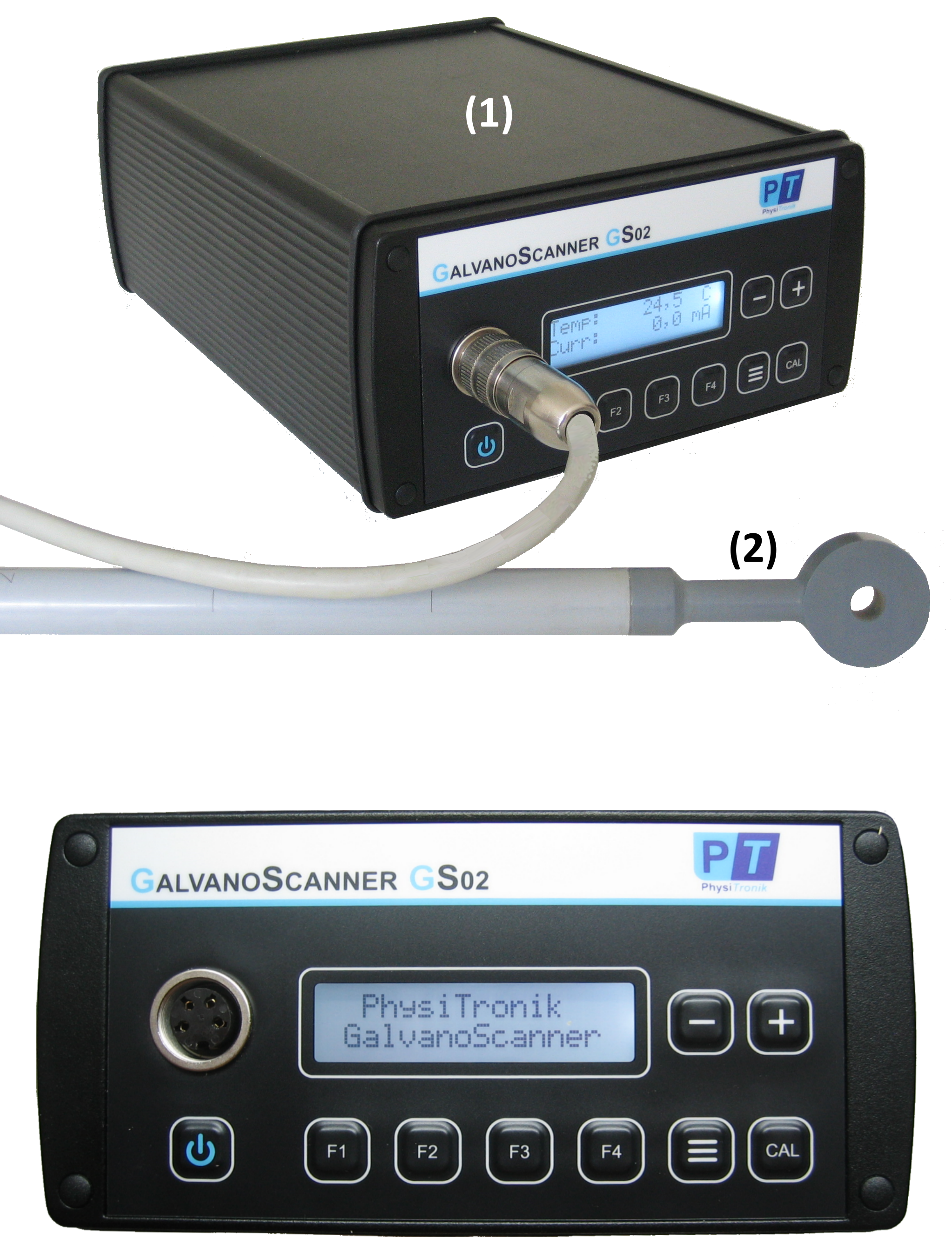
GalvanoScanner GS02
makes current densities visible for everyone!

Download demo video about GS01 in August 2016
1st example:
A practical example of a customer is to illustrate the energy-related consequences of the unnecessary excess coating. It is hard chrome rollers. Below, only the aspects of the chrome plating are considered, secondary aspects such as cooling energy dissipation of the rectifier or energy consumption and waste generation during grinding are not discussed. The rolls are 820 mm long and have a diameter of 480 mm. This gives an area of 124 dm2. The final size of the chromium plating after grinding is a layer thickness of 100 microns. This corresponds to 124 cm3 or 868 g needed metallic chromium. Because of lack of a measurement technique the dimensional accuracy is achieved by excess coating and grinding. To do this, at the ends of the roll, 240 microns chromium are deposited. The measurements showed that on the roll totally 228 cm3 or 1596 g Cr was applied, ie 104 cm3 or 728 g of unnecessary Cr are owed, only beacause of the absence of a direct dimensional accuracy. Considering the electrochemical equivalent of chromium and the faradaic current efficiency of the electrolyte, for these 728 g Cr about 11,000 Ah current are to be applied. Using a typical rectifier voltage of 10 V results in unnecessarily consume of 110 kWh electricity for only a roll in the coating without any effort for grinding etc. In a normal economic situation about 500 of these and similar rollers are coated annually in an electroplating company!
In electroplating, the current density distribution on the work piece plays a crucial role, since hereby the thickness of the metallic coating is decisively influenced. Therefore in practice, it is tried using the cover/baffle plate technique and anode geometry, to achieve as possible a homogeneous current density distribution. The thickness distribution can not be predicted exactly by the coaters, because a simulation of the field distribution is too complicated and expensive, and the cover/baffle plates and anodes are therefore set on past experiences. The positions of the cover/baffle plates and anodes can be optimized by a complex process in which the parts to be coated are taken out of the electroplating bath and tested at the laboratory with respect to homogeneous layer thickness. This time-consuming and costly process is done first, before the start of a production batch. To verify the product quality, this method is also carried out after the initial adjustment, during the production phase at definite time intervals. This requires a further enormous effort, because of the interruption of the production process, until the laboratory measurement results are available. Using a measuring instrument, such as the GalvanoScanners, optimal positioning of the cover/baffle plates and anodes can be easily possible for each bath at the beginning of a batch and continuously tested during the manufacturing process without interruption.

